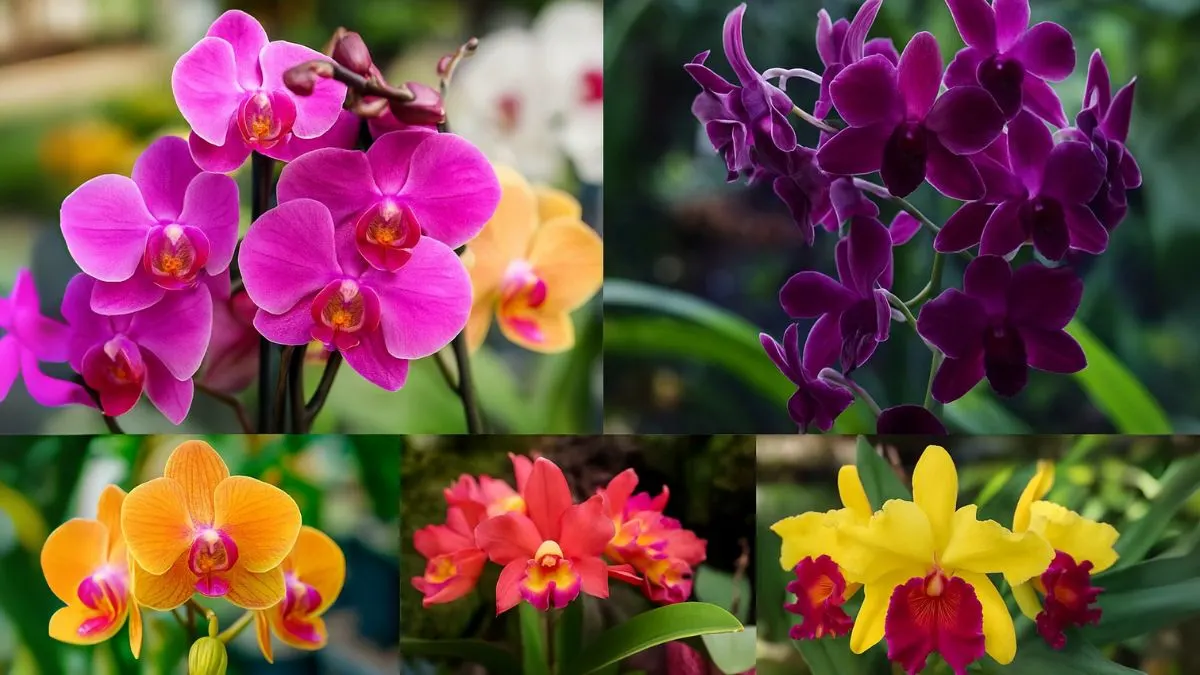Few plants capture attention like orchids. Their exotic blooms, elegant stems, and vibrant colors make them one of the most beloved houseplants worldwide. But orchids also come with a reputation for being “difficult.” The truth? With the right knowledge, you can keep orchids thriving and caring for them throughout their lifespan isn’t as intimidating as it seems.
In this guide, we’ll walk through every essential detail—how to choose the right variety, provide proper light and water, and extend the blooming cycle—so your orchids stay radiant all year.
Choosing the Right Orchid Variety for Indoors

The first step in orchid success is choosing the right orchid variety for indoors. While orchids come in thousands of species, not all are equally beginner-friendly.
- Phalaenopsis (Moth Orchid): Known as the easiest orchid for beginners, it blooms for months and adapts well to indoor conditions.
- Dendrobium: More delicate but loved for its striking sprays of flowers.
- Cattleya: Famous for large, fragrant blooms, often used in corsages.
These orchids are widely available in Canada, the USA, and across the globe. They flourish in indoor environments and are perfect for beginners eager to see fast success.
Light: The Secret to Blooms
One of the biggest mistakes new growers make is underestimating light. Orchids need bright light to produce blooms. Place them near an east- or south-facing window where they can enjoy filtered sunlight.
If your orchid’s leaves turn dark green, it may not be getting enough light. Yellowish-green leaves, on the other hand, usually indicate ideal lighting.
I learned this the hard way when I placed my first orchid in a dim corner. The plant stayed healthy but never bloomed again. Moving it to a sunnier window revived its flowering cycle within months.
Also Read: How to Grow and Care for Osiria Roses (The Hybrid Tea Rose)
Watering Orchids: Less is More
Watering can make or break orchid care. Unlike other houseplants, orchids don’t like sitting in soggy soil. Instead, water deeply but infrequently. Always let the roots dry slightly between waterings.
After flowering, it’s wise to reduce the amount you water your orchid after it blooms. This mimics their natural rest period and prepares them for the next growth cycle.
Pro tip: Use room-temperature water and avoid wetting the leaves, as this can encourage rot.
Repotting: Timing is Crucial
Repotting orchids is essential for their health, but timing matters. Always delay repotting until after your orchid finishes blooming. Repotting during bloom can stress the plant, leading to dropped flowers.
Choose a pot with excellent drainage and use a special orchid mix made of bark, perlite, and charcoal. Orchids thrive in airy, chunky media rather than dense potting soil.
Feeding and Fertilizing
Orchids are not heavy feeders, but regular fertilization helps maintain strong blooms. Use a balanced orchid fertilizer once every two weeks during active growth and once a month during rest.
A simple rule is “weakly, weekly”—dilute your fertilizer to half-strength to avoid burning delicate roots.
Also Read: Step-by-Step Guide to Caring for Your Christmas Cactus at Home
Orchid Care Throughout Their Lifespan
Unlike short-lived houseplants, orchids can live for decades if properly cared for. Mastering the basics of watering, light, and repotting ensures you’ll be caring for them throughout their lifespan.
This longevity is what makes orchids so rewarding. Each new bloom feels like a gift that connects you to years of growth and patience.
Orchid Care Quick Reference
Care Step |
Best Practice |
Light |
Orchids need bright light to produce blooms |
Watering |
Water deeply, then let roots dry slightly; reduce the amount you water your orchid after it blooms |
Repotting |
Delay repotting until after your orchid finishes blooming |
Potting Medium |
Use bark-based orchid mix, never garden soil |
Fertilizing |
Feed with diluted orchid fertilizer during growth |
My Experience with Orchids
When I bought my first orchid, I assumed it would die in weeks. Instead, after learning its rhythm—less water, more light, careful repotting—it’s been with me for over four years. Every time it blooms, it feels like a small miracle on my windowsill.
Orchids teach patience and observation. They remind us that beauty often comes from balance: not too much water, not too little light, and respect for their natural cycles.
Also Read: 6 Stunning Exotic Flowering Houseplants for a Tropical Vibe
Growing orchids doesn’t have to be intimidating. If you’ve hesitated to try orchids, start with a Phalaenopsis and watch how quickly your confidence grows. Soon, you’ll find yourself not only keeping them alive but celebrating every bloom as proof of your care.
🌸 Ready to start your orchid journey? Choose your variety today and create your own year-round indoor paradise.






